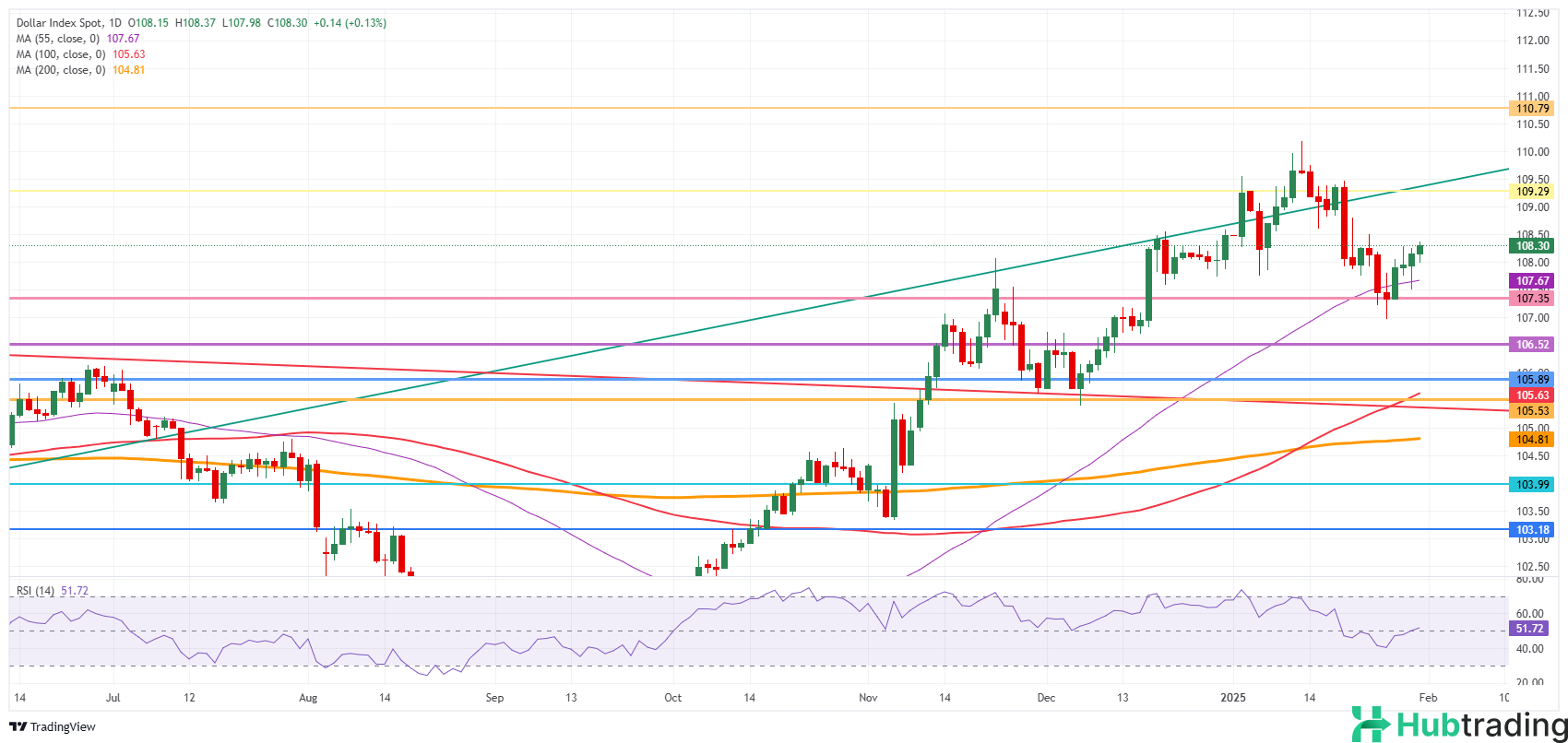- The US Dollar holds steady as the week nears its close.
- Markets brace for a volatile weekend as the US prepares to impose tariffs on Mexico and Canada starting Saturday.
- The US Dollar Index (DXY) extends gains, trading near a fresh weekly high of 108.37, moving further away from 108.00.
The US Dollar Index (DXY), which measures the USD's performance against six major currencies, climbs to 108.35 on Friday, supported by multiple tailwinds ahead of the weekend.
The first boost comes from US President Donald Trump, who confirmed 25% tariffs on $900 billion worth of imports from Canada and Mexico, as reported by Bloomberg. Additionally, Trump threatened 100% tariffs on BRICS nations if they attempt to replace the US Dollar in international trade.
The second driver is the widening rate differential between the US and other major economies. Friday's German inflation data reinforced expectations of an ECB rate cut, further diverging European and US yields, strengthening the USD.
However, the December Personal Consumption Expenditures (PCE) data, the Fed's preferred inflation gauge, had little impact as it met expectations, making it a non-event for markets.
Daily Market Movers: Monday Set for a Volatile Start
- Asian markets remain quiet this week due to the Lunar New Year holiday, with Chinese traders returning on February 5.
- Volatility is expected at Monday's open if US President Donald Trump follows through on his 25% tariff plan for Canada and Mexico.
- On Thursday, Trump reiterated his threat of 100% tariffs on BRICS nations if they attempt to replace the US Dollar in international trade. He posted on TruthSocial, demanding a commitment that BRICS will not create or back an alternative currency, warning that those who try will face tariffs and market exclusion.
- US Personal Consumption Expenditures (PCE) Price Index data for December was released:
- Headline PCE rose 0.2% from 0.1% in November, meeting expectations.
- Core PCE climbed 0.3% from 0.1%, aligning with forecasts.
- The Chicago Purchasing Managers' Index (PMI) for January came in at 39.5, slightly below the 40 expected, but higher than the previous 36.9.
- US equity futures remain positive despite tariff concerns, signaling a strong open for Wall Street.
- The CME FedWatch Tool projects an 82% probability that the Fed will keep rates unchanged at its March 19 meeting.
- The US 10-year Treasury yield is at 4.51%, rebounding after touching a January low of 4.484% on Thursday.
US Dollar Index Technical Analysis: Volatility Looms Over the Weekend

The US Dollar Index (DXY) is set for a volatile weekend as markets remain closed until Monday's Asian session open. With tariffs on Canada and Mexico potentially taking effect as early as Saturday, traders will be unable to react immediately, setting the stage for heightened volatility. As the European session unfolds, market sentiment will begin to stabilize, with DXY expected to fluctuate between 107.30 and 109.30.
If DXY reclaims the 108.00 level, the next upside target is 109.30 (July 14, 2022, high and rising trendline). A further breakout could see DXY test 110.79 (September 7, 2022, high).
On the downside, support remains at the 55-day Simple Moving Average (SMA) at 107.67, reinforced by the October 3, 2023, high at 107.35. While these levels are currently holding, the Relative Strength Index (RSI) suggests further downside potential, with 106.52 and 105.89 emerging as key lower support zones.





